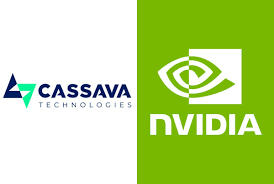Nvidia Expands AI Infrastructure and Partnerships
:max_bytes(150000):strip_icc()/GettyImages-2215306761-9d397024e45348c59642c7d24b9c7ca6.jpg)
Nvidia and Foxconn are collaborating to construct an AI factory supercomputer in Taiwan, utilizing 10,000 Nvidia Blackwell GPUs. Taiwan Semiconductor Manufacturing Co. (TSMC) will leverage this AI system to enhance its research and development efforts. Foxconn CEO Young Liu emphasized that this AI factory aims to connect people, government organizations, and enterprises in Taiwan, fostering innovation and empowering various industries. This initiative follows Nvidia's previous announcement to invest up to $500 billion in American AI infrastructure over the next four years to build AI supercomputers entirely in the U.S.
Jacobs is advancing data centers through NVIDIA's Omniverse Blueprint for AI factory digital twins, which improves the design, simulation, deployment, and operations of AI factories. Jacobs will test and enhance this blueprint workflow, enabling precise simulations of facility equipment efficiency, throughput, and resiliency. The blueprint unifies the design and simulation of numerous components to create digital twins of AI factories, introducing new integrations across power, cooling, and network ecosystems. Engineering teams can design, simulate, and optimize factories in virtual environments, allowing for early issue detection and the creation of more reliable facilities. Jacobs is also involved in several global projects, including a 1.2-gigawatt AI-scale data center in Portugal powered by renewable energy and a wastewater reuse system for data centers in Virginia.
AIC, in collaboration with VAST Data and leveraging the NVIDIA AI Data Platform, will showcase its latest AI storage solution at COMPUTEX 2025. This solution utilizes NVIDIA BlueField DPUs to enhance AI cloud capabilities, supporting configurations up to 2.7 petabytes in a single rack-unit server. The VAST Data Platform serves as the software intelligence layer, optimizing the performance of AIC's server hardware and enabling real-time data access, scalable AI inferencing pipelines, and high-throughput training environments. Michael Liang, CEO and President of AIC, emphasized the commitment to pushing the limits of AI storage performance through this collaboration. John Mao, VP of Global Business Development at VAST Data, highlighted that the platform unlocks the full capabilities of AIC's systems and NVIDIA BlueField-3 DPUs, delivering the performance and scale AI enterprises demand. Rob Davis, Vice President of Storage Technology at NVIDIA, noted that NVIDIA BlueField-3 DPUs provide the performance, efficiency, and security needed to power modern AI data platforms.
Nvidia plans to sell its NVLink Fusion technology to other chip designers, enabling the creation of powerful custom AI systems. Marvell Technology and MediaTek are among the first to adopt this technology for their chip efforts. CEO Jensen Huang announced this at Computex, highlighting Nvidia's evolution beyond gaming graphics into AI chip dominance. NVLink Fusion facilitates faster chip-to-chip communication, essential for building and deploying AI tools. Huang also revealed plans to build a Taiwan headquarters in Taipei. Nvidia has been designing central processing units that would run Microsoft's Windows operating system and use technology from Arm Holdings. Nvidia also launched a desktop version of its AI chips, called DGX Spark, targeting AI researchers. Computex is expected to host 1,400 exhibitors and will be the first major gathering of computer and chip executives in Asia.








